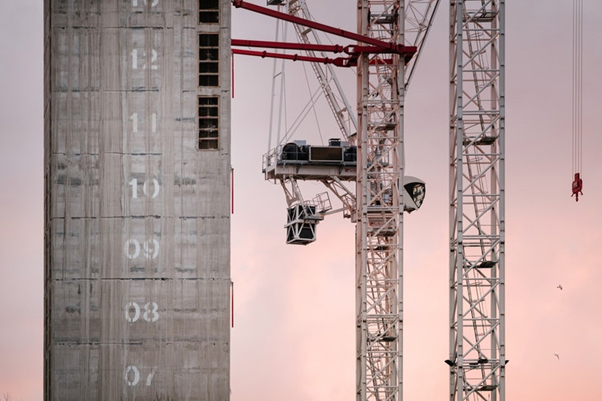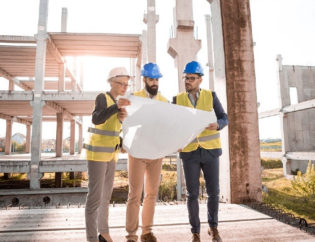
Stick-built traditional construction has always been an acceptable method of construction for many long years. But with the growing popularity, factory-built modular construction has been taking over the way of constructing certain buildings. This has created great confusion in the minds of business owners to decide the best construction method to build their offices, industries, or factories. Therefore, to clear the confusion, we have outlined some main differences so that you can decide the best construction method for your projects.
Modular Construction |
Traditional Construction |
|
|
Definition |
Modular construction is the process where buildings are constructed off-site, under a controlled environment, using the same codes and standards of building as that of a conventional building. |
Traditional construction is described as linear construction, where each individual step is not only constructed entirely (or largely) on site but also needs to be completed before the project can move on to the next phase. |
|
Period of Completion |
Modular construction can approximately take 8-15 weeks of completion period. |
Traditional construction can take around 6-12 months from start to finish or maybe longer. |
|
Design and Engineering |
The design of a modular construction involves various aspects such as the requirement of modular production, installation, and interface planning. It also consists of the economics and client-related needs that further influence the engineering and design decisions of the building before constructing it. Since modular buildings are highly customisable, the change in the interior and exterior appearances affect the design of the building. |
The design of the traditional construction is based on samples of the past projects done by the architect hired to design the building. Hence, the construction and design implemented are envisioned by the architects and the engineers. The engineering aspect also depends on the project site influenced by the natural, social, and other locational conditions such as weather, labour supply, and local building codes. Due to the longer duration taken by the traditional construction you may experience changes in the design plans due to market demands and technological complexity. |
| Permits and Codes |
Since modular construction are manufactured in a controlled environment of a factory, the components comply with the rules and regulations as followed by the traditional construction. The final structure needs to comply with the National Building Code of Canada. |
The traditional condition plans need to be submitted for review by the local building department to ensure that they comply with the building codes and obtained necessary permits. You need to constantly check with your inspecting authorities after completion of every step during the construction process. This can lengthen the construction period. |
| Site Development and Foundations |
Before construction, there are the processes of excavation, gradation, levelling, and foundation laying at the site just like traditional construction. |
The site development process includes excavation, gradation, levelling, and foundation laying. |
|
Construction Method |
The modular building construction is quick and easy as it involves assembly-line building components manufactured in a factory. These buildings are produced in modules that are put together on the site, reflecting the identical design, and specifications similar to stick-built construction. The assembling of components on site makes the process faster, thus reducing the risk of delays from weather and vandalism. |
The construction method in stick-built occurs on site and work projects with constant inspection and careful examination schedules which is dependent on the weather conditions. The foundation is first laid, and then the typical brickwork-and-blockwork construction method is followed. The next step is not executed until the completion of the previous step. So there is a delay in the installation of specific materials like steel, bricks, cement, wood, etc. to get to the next phase. |
|
Cost |
Since the time taken during the process is much less, it makes modular constructions more cost-effective than traditional. The cost of installation and assembly is much lower in modular construction, thus helping the business owners to save with almost 50% overall construction expenses. |
Traditional construction takes a lot of time as their progress is dependent on various factors like weather conditions, labour, codes of federal, state, and local levels, etc. with the consideration of so many factors, it hikes the cost relatively higher than normal. |
|
Sustainability |
Modular buildings are built in the factory-based environment. It keeps track of the superior quality materials manufactured. With off-site construction, the wastage generation is reduced by 90%. The components are assembled keeping in mind the sustainability of the overall quality. |
The sustainability involved during traditional construction depends on the skills of the contractor, engineers, and architect. With the constant change in government strategies, it makes it difficult to focus on the sustainability of the structure. |
|
Community Friendly |
Modular construction process involves reduction of the carbon footprint of the build with fewer people and elimination of mess made by materials on site. With faster construction and reduction of wastage, it creates less noise compared to traditional. |
Traditional construction creates a lot of noise, traffic, mess, and disruption. This construction method is not very community-friendly, and it disturbs people around the construction site. |
|
Adaptability |
Modular structures can be easily expanded, relocated, or reused. |
Traditional buildings are fixed and permanent, and they can’t be reused or relocated. |
Modular construction is taking building construction into the future. Although we feel that modular construction has the upper hand in the discussion, you need to consider every aspect of both the construction types, talk to your contractor, and then decide which type would be apt for your project.









